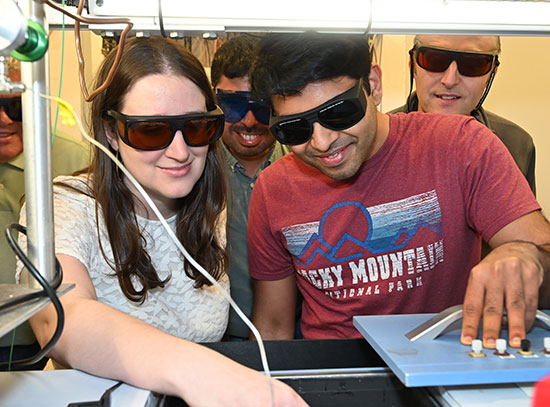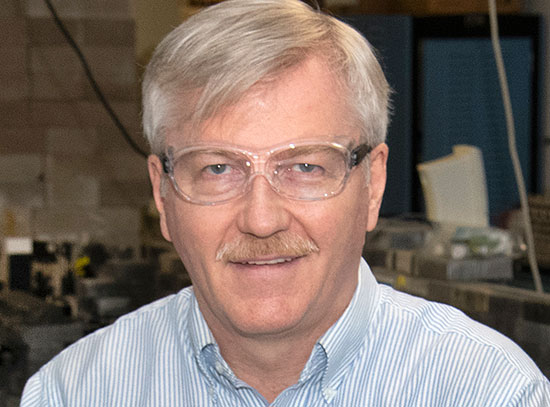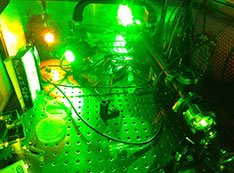- Home
-
Research Groups
Division Groups
- Artificial Photosynthesis
- Catalysis: Reactivity & Structure
- Electrochemical Energy Storage
- Electron- and Photo-Induced Processes for Molecular Energy Conversion
- Neutrino and Nuclear Chemistry
- Surface Electrochemistry and Electrocatalysis
Associated Groups
- Catalysis for Alternative Fuels Production
- Nanostructured Interfaces for Catalysis
- Structure and Dynamics of Applied Nanomaterials
- People
- Operations
- News
- Events

Electron- and Photo-Induced Processes
This program, supported by the DOE Office of Science Chemical Sciences, Geosciences and Biosciences Division, applies both photoexcitation and ionization by short pulses of fast electrons to investigate fundamental chemical problems relevant to the production and efficient use of energy and thus obtaining unique insights not attainable with other techniques. These studies may play an important role in the development of safer, more effective, and environmentally beneficial processes for the chemical conversion of solar energy and advanced nuclear fuel cycles. Details of our research
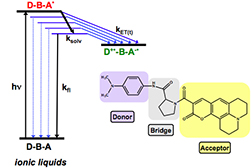

One set of questions concerns processes occurring on very short time scales, including time-dependent yields, properties, geminate recombination, and reactivity of primary radiation products in non-aqueous solvents and ionic liquids. A second set examines thefundamental science of charges and excited states in conjugated polymers and ionic liquids. Work on conjugated polymers indicates that these molecules can transport charges rapidly over very long distances: the molecules might be called semiconducting "molecular wires." A third set deals with reactivity of molecular and radical transients, where pulse radiolysis provides the most convenient or the only method to rapidly generate these species. Work in this area includes the reactivity of environmentally and biologically important nitrogen-oxygen species whose chemistry is poorly understood, and redox, proton, and hydrogen atom transfer reactions that relate to solar fuel generation.
This program includes the Accelerator Center for Energy Research (ACER), which develops and operates advanced instrumentation for the application of radiolysis techniques. The principal tool for this research is the Laser Electron Accelerator Facility (LEAF), which combines short, ~10ps, pulses of electrons and 0.1ps laser light to produce, excite, and examine transient species with high time resolution. ACER also includes the 2 MeV electron Van de Graaff, which is a sensitive and adaptable instrument for radiolytic kinetics work on longer time scales, and a Co-60 source that is used for product studies and detection of radical intermediates by scavenging.
Questions and Comments to: Jim Wishart
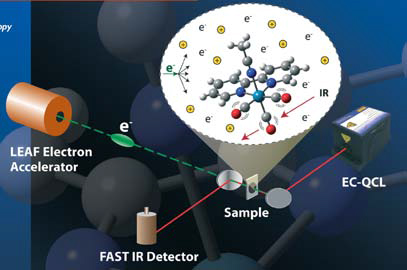
Laser Electron Accelerator Facility (LEAF)
Group Leader
-
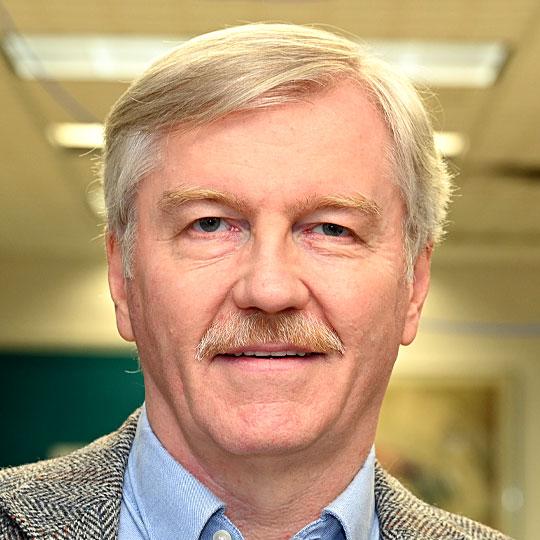
James F. Wishart
Director, Molten Salts in Extreme Environments Energy Frontier Research Center; Distinguished Chemist
(631) 344-4327, wishart@bnl.gov




